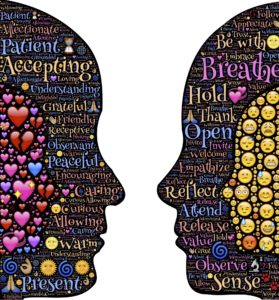 One reason there’s so much social and political dysfunction in our world these days is that we don’t take the time – or make the effort – to understand each other. Case in point, I once witnessed this exchange between two focus group participants. The category: personal wealth management.
One reason there’s so much social and political dysfunction in our world these days is that we don’t take the time – or make the effort – to understand each other. Case in point, I once witnessed this exchange between two focus group participants. The category: personal wealth management. t year I was interviewing healthcare professionals about how they use a specific medical device. Each doctor I spoke to said firmly that there was one proper way to use this device, although each one’s approach was somewhat different from that of the others. The nurses had a different point of view. While each had his or her own approach, they all acknowledged that there are a variety of ways to use this device, and the approach for a specific situation might vary based on several factors, including personal preference. When I told the nurses about the doctors’ POV that there’s only one right way, they all laughed and said something like, ‘yeah, that’s doctors.’
t year I was interviewing healthcare professionals about how they use a specific medical device. Each doctor I spoke to said firmly that there was one proper way to use this device, although each one’s approach was somewhat different from that of the others. The nurses had a different point of view. While each had his or her own approach, they all acknowledged that there are a variety of ways to use this device, and the approach for a specific situation might vary based on several factors, including personal preference. When I told the nurses about the doctors’ POV that there’s only one right way, they all laughed and said something like, ‘yeah, that’s doctors.’ A few years ago, I was conducting research on addiction recovery. In a focus group among participants who were successfully managing their condition we got to discussing The Serenity Prayer, written in the 1930’s by Reinhold Niebuhr, and often quoted in addiction treatment settings:
A few years ago, I was conducting research on addiction recovery. In a focus group among participants who were successfully managing their condition we got to discussing The Serenity Prayer, written in the 1930’s by Reinhold Niebuhr, and often quoted in addiction treatment settings: I wrote in December about the Covid-related attitudes I’ve been seeing recently as a researcher. Thanks for all your responses. I’ve also written two posts recently about civility and have received lots of interesting feedback about them. I don’t think it’s a coincidence that we’re on edge because of Covid and that it has become difficult to have civil conversations nowadays.
I wrote in December about the Covid-related attitudes I’ve been seeing recently as a researcher. Thanks for all your responses. I’ve also written two posts recently about civility and have received lots of interesting feedback about them. I don’t think it’s a coincidence that we’re on edge because of Covid and that it has become difficult to have civil conversations nowadays.